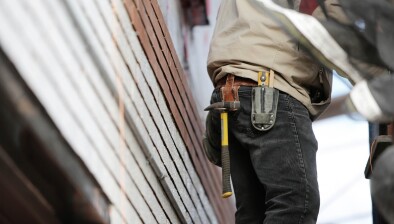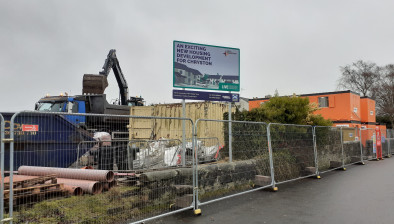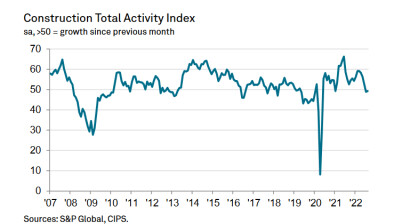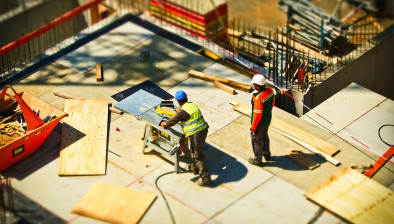Cautious welcome to modest increase in construction output
Output in the UK construction sector increased by 0.6% in the month-on-month all work series in May 2019 but flatlined on a three-month on three-month basis.
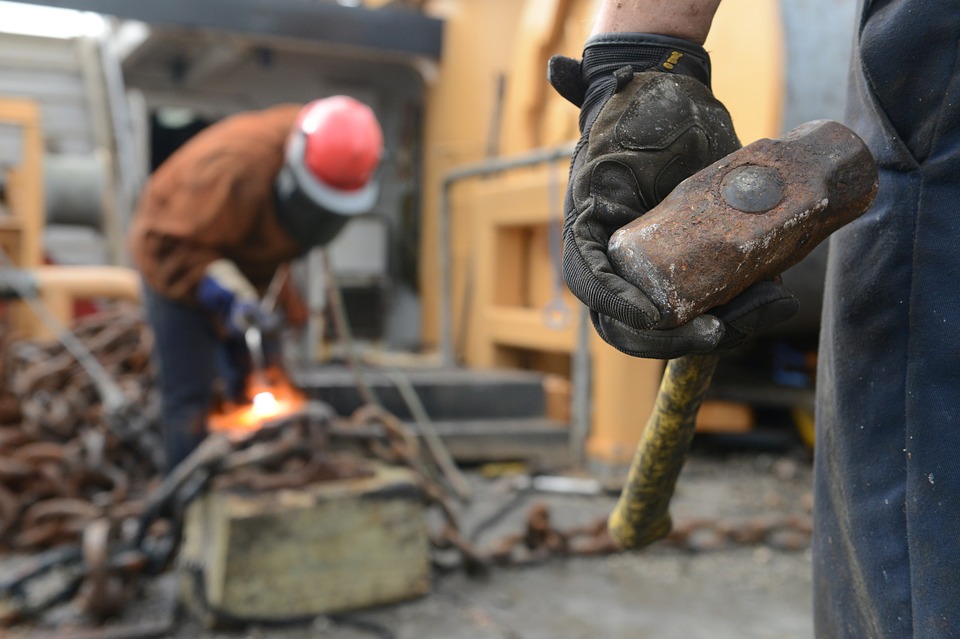
The latest figures from the Office for National Statistics (ONS) today found that the modest growth was driven by increases in both new work and repair and maintenance which grew by 0.4% and 1.2% respectively.
However a fall in repair and maintenance of 0.5%, which was offset by a 0.3% increase in new work, resulted in a 0.0% growth in the three-month on three-month all work series.
In new work, the increase in the three-month on three-month series in May 2019 was driven by growth in private commercial new work and public new housing, which saw growths of 2.2% and 8.4% respectively.
In repair and maintenance, the decrease in the three-month on three-month series in May 2019 was because of declines in both private and public housing repair and maintenance, which decreased by 2.5% and 3.2% respectively.
The figures generated a mixed reaction from trade bodies, analysts and contractors.
Mark Robinson, Scape Group chief executive, said: “Today’s data paints a stark picture of the construction industry. Spring is typically when the sector bounces back and output rises, but in reality we are seeing a sector that continues to be dogged by uncertainty. Clients, especially in the public sector, are unwilling to push forward with new work, which has been evident on the ground all year and has now contributed to a £229 million decline in output.
“On the quarter growth has stalled and concerningly this is also being driven by a decline in the repair and maintenance of public and private housing. We know there is a significant requirement for reactive repair work following the devastating tragedy at Grenfell two years ago. The public and private sectors need to push forward with replacing material that has been identified as flammable and bring public and private housing up to a safe standard.
“This month also only saw a small increase in private housing delivery, which has recently been propping up output. It is worrying that neither Conservative leadership candidate has spoken about housing whilst on the campaign trail, beyond Boris Johnson’s vague references to cutting stamp duty. We cannot afford for housing to drop down the political agenda, and become side-lined like so many crucial public services. I see no immediate end to the political infighting and with our new prime minister falling massively short of a mandate from the public, and almost short of a majority in parliament, the industry is going to continue suffering while it holds its breathe and waits for the outcome of Brexit.”

Clive Docwra
Clive Docwra, managing director of construction consulting and design agency McBains, said: “The construction industry will give a cautious welcome to these figures, as they show a moderate increase in output in May after two successive falls in March and April. We expected a much bleaker picture given the continuing fog surrounding Brexit and pessimistic predictions of a sluggish economy.
“Growth of 2.2% in private commercial new work and 8.4% in public new housing was also better than forecast.
“We fear this could be a temporary bounce however, as the longer term outlook is one of uncertainty with many projects on hold until the detail of the UKs EU withdrawal becomes clearer.”
Blane Perrotton, managing director of the national property consultancy and surveyors Naismiths, added: “Months of extreme volatility have left the construction industry as punchdrunk as a boxer – tottering three steps forward and then two steps back.
“This latest snapshot of the sector shows it is still on its feet, but stumbling aimlessly and yearning for the Brexit bell.
“Perhaps most striking is the detail behind the stagnant headline figure. Private sector housebuilding – long the standard bearer of an industry that was in retreat elsewhere – is declining, while public sector housebuilding has rallied to a decent rate of growth.
“Overall, what little growth there was in the last quarter was cancelled out by the sharp contraction in non-housing public sector work.
“While zero growth is not yet a decline, the omens for the future are not good. The forward-looking PMI data found that output in June fell at the fastest rate since the dark days of 2009.
“Finance for developers remains cheap and relatively plentiful, but unfortunately this counts for little when investor confidence is being pummelled by constant political uncertainty.
“With the prospect of a hard Brexit increasing not receding, few in the industry expect the growth-sapping cloud of uncertainty to lift any time soon. Against that backdrop, stagnation isn’t failure, it’s almost an achievement.”
The Federation of Master Builders (FMB) called on the new Prime Minister to stimulate construction and house building for the benefit of the wider economy.
Sarah McMonagle, director of communications at the FMB, said: “Alarm bells will be ringing in the ears of the two candidates vying to be Prime Minister, with these latest stats showing that the construction sector is at a standstill. Whoever wins the race for PM, I want to see that person take decisive action in their first days in office by intervening to stimulate our waning sector, which is so vital to the health of the wider economy. Indeed, without it, our country’s house building aspirations will be impossible to deliver.”
McMonagle added: “The poor performance of the construction sector over the past few months was driven partly by a drop in activity in the repair and maintenance sector. As you would expect, this part of the construction industry is particularly vulnerable to dips in consumer confidence, which the threat of a ‘no deal’ Brexit continues to perpetuate. There would be no better way to encourage homeowners to commission building projects in the second half of this year than by slashing VAT on housing repair, maintenance and improvement from 20% to 5%. Furthermore, when we asked our members how the next PM could best prevent an economic downturn, almost 90% felt this was the most effective way to achieve it.”

Kevin Reid
In Scotland, Kevin Reid, chief executive at Cruden Group, highlighted the problem of housing developments getting stalled in the planning process.
He said: “Despite continued political and economic uncertainty, construction output has not slowed down this month. This is reflected within the housebuilding sector, where demand for new homes is outstripping supply, as the sector tries to plug the housing shortage gap.
“However, tackling this problem is being compounded by the growing number of housing developments getting stalled in the planning process, with latest figures showing a dramatic 44.5 percent drop in the number of homes receiving planning consent in the last quarter of 2018.
“More encouragingly, the amended Planning (Scotland) Bill has finally passed through Parliament. I hope this will result in much more streamlined and delivery-focused planning system. Importantly, it needs to be a catalyst to get more housing developments underway and in turn see more investment and employment opportunities in Scotland - ensuring our communities have the new homes they need for a successful future.”
Gordon Reid, business development manager for Kier Regional Building Scotland, added: “It’s encouraging to see output figures for new work climb this month. Within the construction industry, there are a number of exciting opportunities emerging, and in the sector that we operate in, we have visibility of a pipeline of potential new contracts over the next few years that are worth £2.3bn in Scotland alone, and £10bn across the UK.
“At Kier Regional Building Scotland, we have already secured a substantial portion of our pipeline of work for 2020. Together with delivering important projects across health and education sectors, such as the state-of-the-art Alness Academy for The Highland Council, we are also restoring and refurbishing some of Scotland’s most notable arts and heritage buildings including Glasgow’s Burrell Museum and the Citizens Theatre.”












